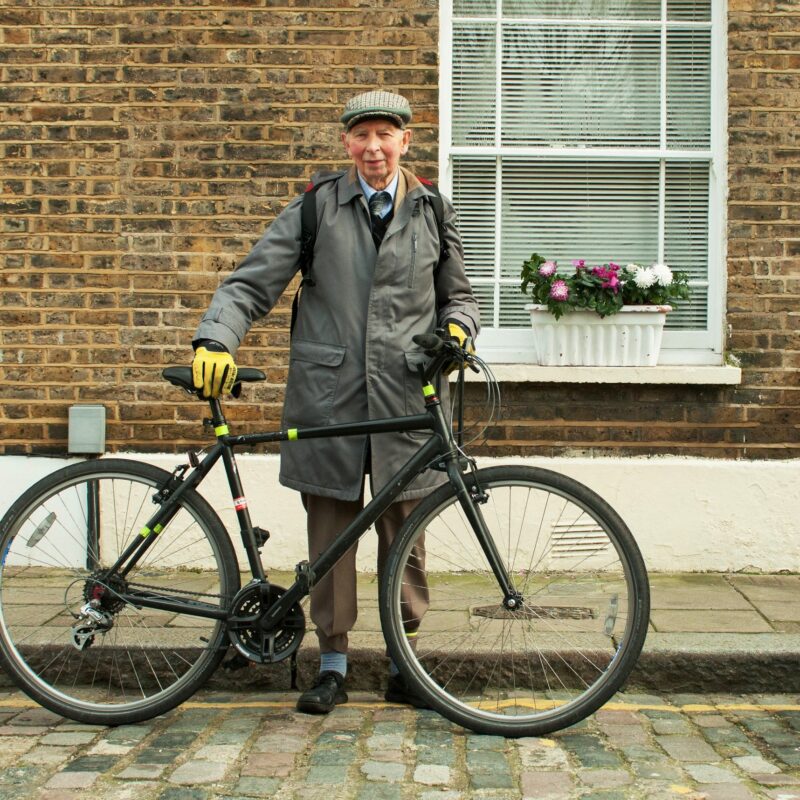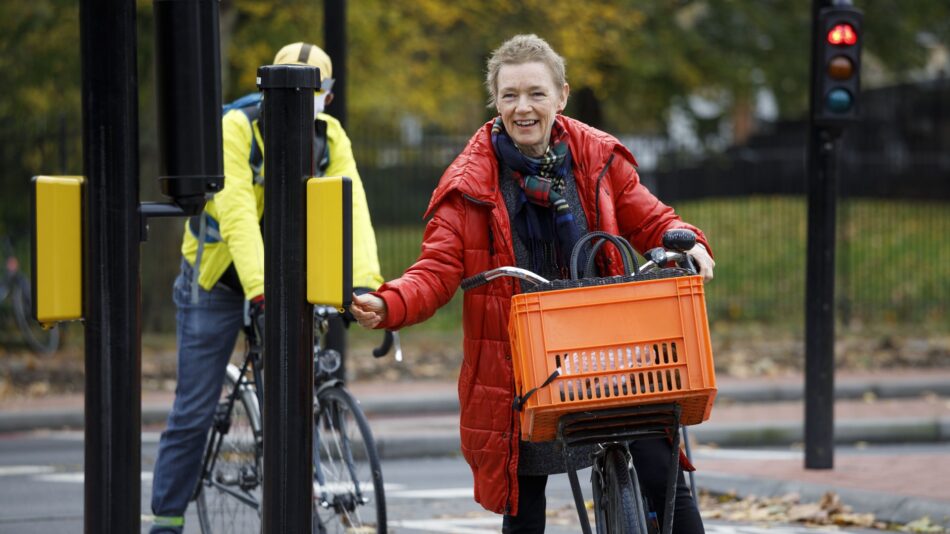

To make your journey more enjoyable while cycling in winter, you may want to make a few changes to your set up. Our list of tips and gear suggestions below is a good place to start and if you need advice on a specific product, pop into your local bike shop.
We’d also suggest double-checking your route and adjusting your riding style – think about where might be icy, take it easy around corners, and if you need to, change routes to avoid dark sections. Check out our separate tips on route-planning here.
Dressing for winter cycling is a personal choice. Some people fully embrace technical fabrics (like Goretex, Sympatex and Ventile) for the cold and wet, and will put their destination clothes in their bag or store them at work while others will get from A to B in a long fuzzy coat. It’s all about the type of journey you’re doing and how you react to the cold. We’ve done our best to highlight the important bits below so use these as a guide and play around until you find what works for you.
One thing to note is potentially to go a little slower so you don’t end up sweaty – you’ll feel the cold much more if you’re damp and sweaty, and it’s much harder to get warm and dry again afterwards.
Head and Neck
Glasses with clear lenses are great for stopping rain from hitting your eyes and can be worn both day and night. If your head gets cold, a cap or one of the many head coverings on offer is the way to go (there are special caps that go under helmets). Neck warmers are also great! They’ll keep your neck nice and toasty and if the air is extra icy, you can pull it up over your mouth to shield your face.
Torso
A warm, waterproof and breathable jacket is a great investment for cycling in the colder months. It will keep out the weather while enabling you to stay dry and not get sweaty. If you tend to warm up quickly when cycling, one with armpit zips is a good idea for added ventilation.
Layering clothes is a common technique: a thin, long-sleeve base layer with a warm gilet over the torso and a lighter waterproof on top when required.
Keep in mind that you will warm up once you get moving so it’s okay if you feel a little bit cold when you first set off. For peace of mind, take an extra long layer with you until you’ve figured out what works best for you.
Hands
Waterproof gloves will keep your fingers warm and dry – the better designs have reinforced and padded palms for comfort. Work gloves from shops like Lidl do the job at less than £10.
Legs
It’s a good idea to have a pair of waterproof over-trousers on hand to protect your legs from the rain but if it’s a shorter commuter journey, some people prefer to cycle in leggings they don’t mind getting wet in and keeping their destination trousers/skirt/dress/leg covering of choice in their bag.
A long rain poncho is also great at keeping the upper part of your legs dry – be sure to use the finger loops to prevent the poncho/cape flying over your head.
Feet
If you don’t want to squelch around in soggy shoes at your destination, waterproof overshoes are a good idea.
Some people also have a pair of designated winter cycling shoes (the “seen better days” ones your mum would frown upon) to sacrifice to the weather gods with a spare pair of nice ones in their bag.
If you struggle with cold feet in winter, a waterproof cycling shoe with a bit of insulation is a game changer and they come in casual styles that won’t look out of place at a social event.
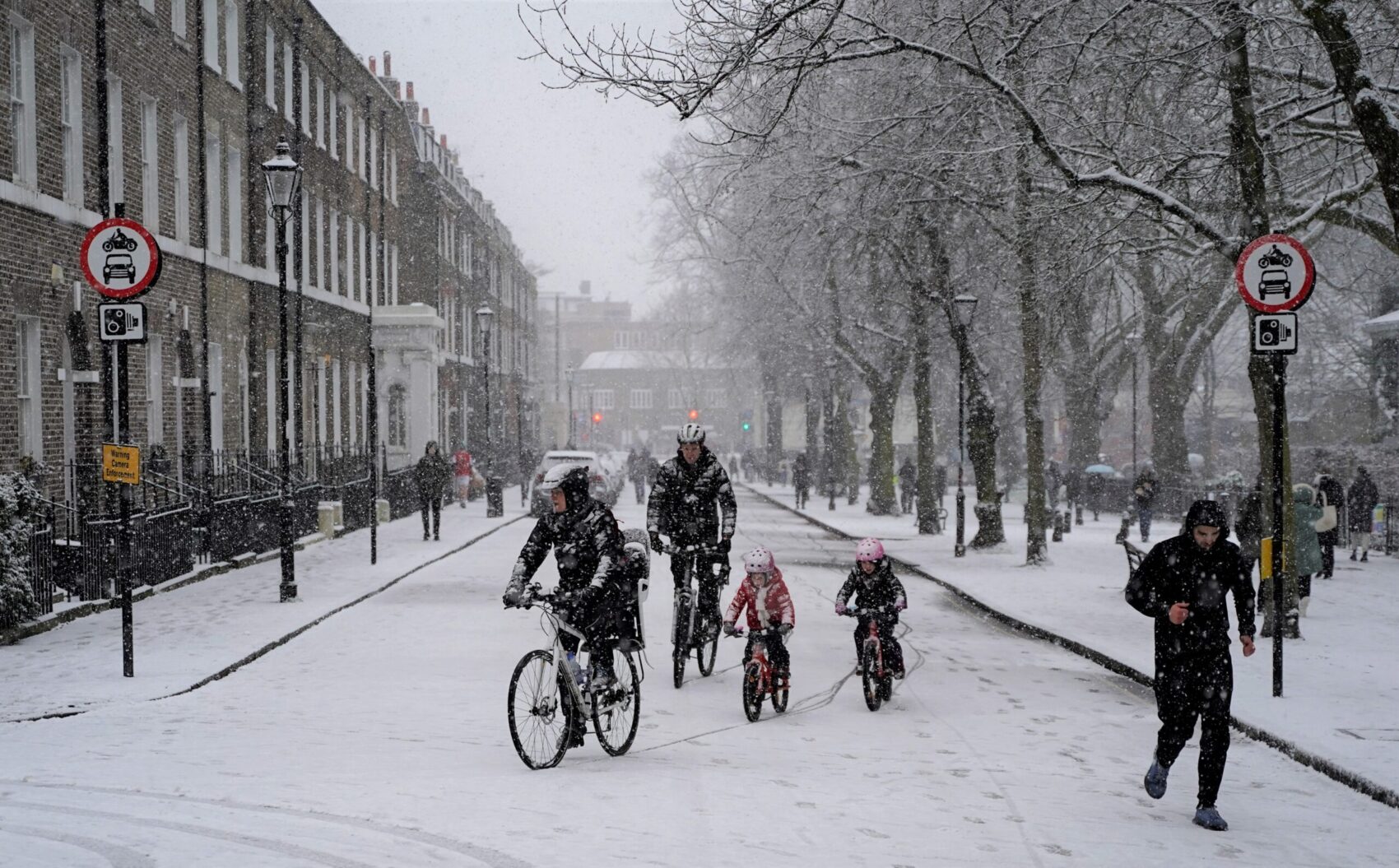


There's no such thing as bad weather - just unsuitable clothing! Make sure you have a good waterproof (not just showerproof) coat & trousers and check the forecast before you leave to see if you need to pop them on or bring them in a pannier bag. And keep your lights charged, or if you're forgetful like me, get dynamo lights so you never have to remember!
Clare Rogers is LCC's Healthy Streets Campaigner and cycles 9 miles to the office from her home in Enfield in all weathers

When it’s getting dark at 4pm, chances are you’ll often be cycling in the dark. Reflective materials on your clothing or your bike help you be visible to other road users. In cities in the dark, reflective materials are much more visible than bright colours. Double-check the back of your bike to make sure somewhere there’s a red reflector (it’s normally fitted as standard).
You must have front and back lights on your bike by law. You should have a white light on the front and a red light facing backwards. Modern lights are cheap but make sure you select the right light for the type of cycling you are doing. Some lights are very bright and not suitable for busy roads as they can dazzle other road users – if you have a bright light make sure to dip it in traffic, especially on two-way cycle lanes like the Embankment.
If your bike didn’t come fitted with mudguards, buying a set will keep you (and the cyclist behind you) from getting wet and dirty. Some snap-on mudguards (like the ones that attach to the saddle or seat post) can be quickly fitted, but these are less effective than those that fit closely around your wheels. Clip-on mudguards are also easy to fit yourself but it can be tricky to position them right. If you want maximum rain protection with little fuss, a set of fixed full-length mudguards fitted at your local bike shop is the way to go.
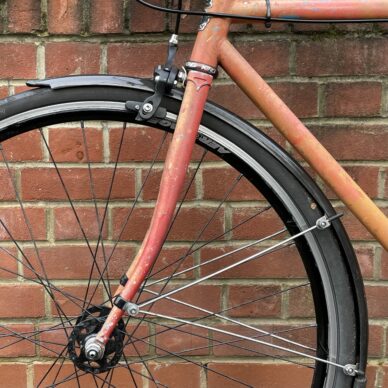
Fixed Mudguard
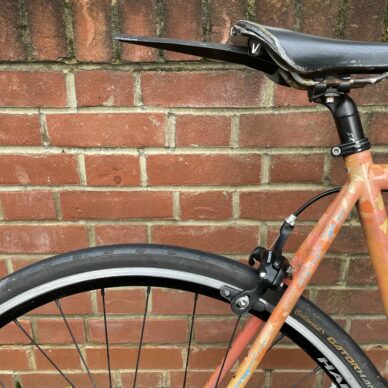
Snap-on Mudguard
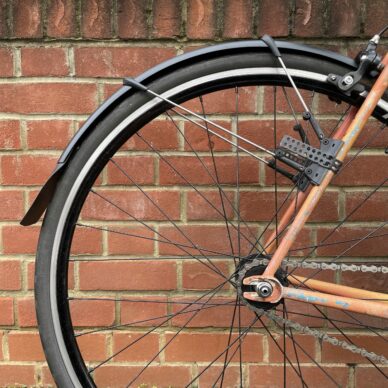
Clip-on Mudguard
You’re more likely to get punctures in wet and cold conditions so it’s a good idea to invest in some tyres that are puncture resistant. Keeping the air topped up will also help prevent punctures and if your tyres start to look worn, rather be safe and replace them. Tyres typically last about 3000 miles of riding.
Rim brakes don’t work as well in wet conditions so if you have rim brakes, remember to give yourself a longer braking distance and regularly check the wear on your brake pads.
Lastly, a note on very extreme conditions – it is possible to cycle in the snow but it’s important to stay on high alert and look out for black ice because the risk of your wheels slipping out from under you is very real. In these conditions, it’s often best to stick to main roads because they are gritted earlier than others.
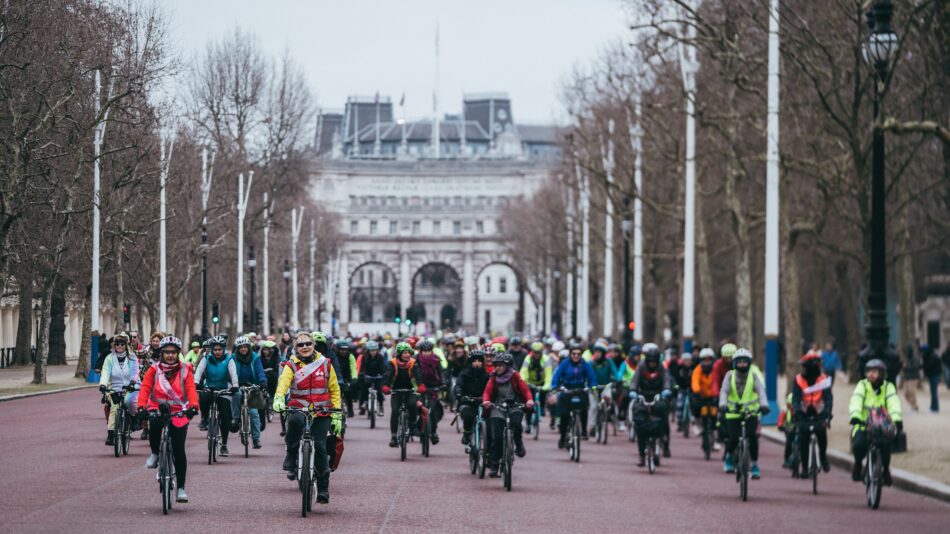
BECOME A MEMBER
We're campaigning to make cycling in London safer and more enjoyable for everyone. And if you join today on an individual or household membership by Direct Debit, you also get a free welcome gift worth £50!
KEEP UP TO DATE
